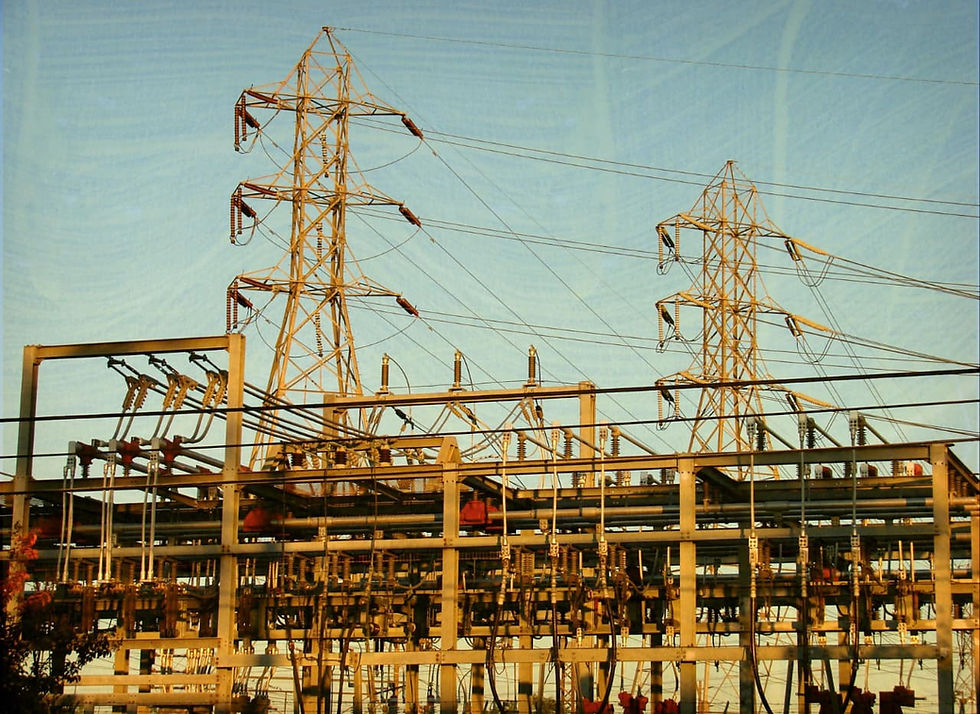Differences between Indoor and Outdoor Distribution Cells.
- Grupo Edmar

- Oct 14
- 3 min read
October 14, 2025 - Differences Between Indoor and Outdoor Distribution Cells.

Differences Between Indoor and Outdoor Distribution Cells.
In medium-voltage electrical systems, distribution panels play a fundamental role in ensuring the control, protection, and switching of electrical energy. However, not all installations require the same type of panel. One of the most important distinctions is between indoor and outdoor panels, each with specific characteristics that adapt to different environments and technical needs.
Below, we explain their main differences, applications, and how to choose the ideal option for your electrical project.
What are Distribution Cells and What Are They Used For?
Distribution cells are medium-voltage electrical equipment that allows for the connection, disconnection, protection, and control of circuits within an electrical network. Their main function is to ensure continuity of supply and protect system components from overloads or failures.
They are used in electrical substations , industrial parks, commercial complexes and urban developments , being essential for safe and reliable operation of the network.
Indoor Cells: Compact Design and Security in Closed Spaces.
Indoor switchgear is designed for installation inside buildings, electrical rooms, or control centers. It features a compact metal structure that optimizes space and keeps all components protected from dust, moisture, and direct contact.
Its advantages include:
Greater security for technical staff.
Easier maintenance and less exposure to environmental conditions.
Ideal for industries, hospitals, corporate offices and manufacturing plants .
These cells are often used in conjunction with medium-voltage transformers for internal power distribution, whether indoors or in areas with a fire risk.

Exterior Cells: Resistance and Durability in Climate Conditions.
On the other hand, outdoor distribution cells are manufactured to withstand adverse environmental conditions, such as rain, solar radiation, dust, and temperature variations . They are commonly installed in outdoor substations , energy parks , rural areas , or large-scale industrial infrastructure .
Its main features include:
Reinforced structures and anti-corrosive coatings.
High durability and operational reliability.
Superior IP protection against external agents.
These cells are designed to operate for years without compromising safety or continuity of electrical service .
Key differences between Inner and Outer Cells.
Although they perform similar functions, there are important differences that influence their selection.
Feature | Interior Cells | External Cells |
Location | Inside electrical enclosures or industrial warehouses. | Installed outdoors or in metal sheds. |
Environmental protection | Medium level, against dust and controlled humidity. | High, resistant to rain, UV rays and pollution. |
Simpler and safer. | Requires periodic inspections for exposure. | |
Cost | Lower initial investment. | Greater investment in materials and coatings. |
Typical applications | Industry, commerce, hospitals. | Substations, energy parks, rural areas. |
Factors to Consider Before Choosing a Distribution Cell.
Before selecting a cell, technical and operational aspects such as:
Project location (interior or exterior).
Voltage level and current capacity .
Environmental conditions and risk of corrosion.
Safety requirements and local regulations.
Ease of maintenance and availability of spare parts .
In many cases, specialized advice can optimize costs and ensure compatibility with other equipment, such as transformers or switchgears.
Quality Distribution Cells.
Investing in quality switchgear is essential to avoid failures, interruptions, and financial losses. Reliable equipment reduces maintenance, improves safety, and extends the lifespan of the entire electrical installation.
In industrial and infrastructure projects, these advantages make the difference between an efficient and stable network and one vulnerable to failure .
At Grupo Edmar , we understand the importance of selecting the right electrical equipment for each environment. That's why we offer medium-voltage electrical disconnectors and personalized technical advice for the integration of cubicles, transformers, and electrical distribution systems .
Our equipment meets the highest quality standards, ensuring safety, efficiency, and competitive delivery times for industrial, commercial, and energy projects.



Comments